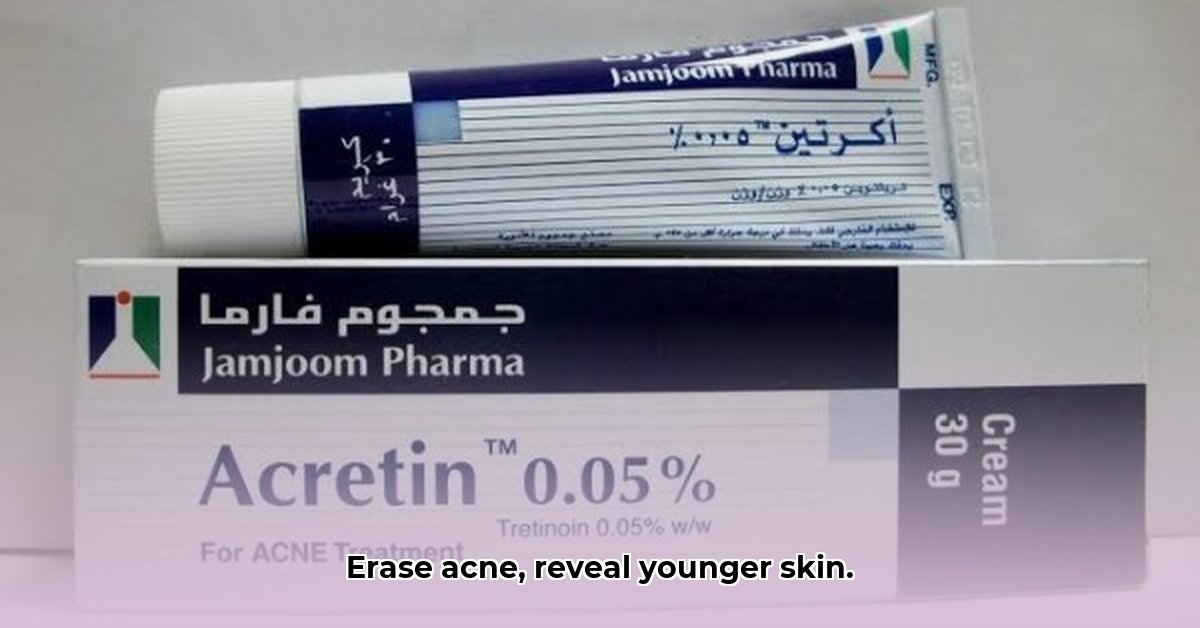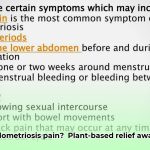Dealing with acne or seeing those first wrinkles pop up? Let’s talk about Acretin cream. It’s a powerful skincare product that can help clear up acne and even make your skin look younger. This guide will explain how it works, how to use it safely and effectively, and what you can realistically expect. We’ll cover everything from application techniques to potential side effects and answer some common questions. Remember, while this information is helpful, it’s always best to consult with a dermatologist before starting any new skincare treatment. They can help you figure out if Acretin is right for you and create a personalized plan.
Acretin Cream: Your Guide to Clearer, Younger-Looking Skin
Acretin cream, containing the active ingredient tretinoin (a retinoid derived from vitamin A), is a valuable tool for improving your skin’s health and appearance. It’s not a miracle cure, but when used correctly and under a dermatologist’s guidance, it can deliver noticeable improvements. Let’s explore how it works, its various uses, and how to maximize benefits while minimizing potential side effects.
How Acretin Cream Works: A Deep Dive into Skin Rejuvenation
Acretin cream belongs to a family of medications called retinoids, which are derivatives of vitamin A. It works on multiple levels to rejuvenate your skin. Here’s a detailed look at its mechanisms:
- Cellular Turnover Booster: Acretin speeds up the natural process of skin cell renewal. This means dead skin cells are shed more quickly, revealing brighter, fresher skin underneath. This process helps prevent clogged pores, which are a primary cause of acne.
- Comedolytic Action: Tretinoin helps to dislodge existing comedones (blackheads and whiteheads) and prevent the formation of new ones. It works by decreasing the cohesiveness of follicular epithelial cells, making it easier for these plugs to be expelled.
- Inflammation Calmer: For those struggling with acne, inflammation is a major culprit. Acretin helps to reduce this inflammation, which prevents breakouts and calms existing blemishes. Tretinoin has anti-inflammatory properties that can calm irritated skin.
- Collagen Stimulator: Acretin boosts collagen production, helping to reduce the appearance of fine lines and wrinkles, improving overall skin texture and tone. It essentially strengthens the skin’s support structure.
- Hyperpigmentation Reduction: Acretin can help fade hyperpigmentation (dark spots) by increasing cell turnover and promoting the shedding of melanin-containing cells.
Acretin Cream’s Versatility: More Than Just Acne Treatment
While Acretin is effective in treating acne of various severities – from mild breakouts to more stubborn cases – its benefits extend beyond blemish control. This cream can help address:
- Acne Treatment: Acretin targets pimples effectively, helping to clear up existing breakouts and prevent future ones. It addresses different stages of acne, making it a comprehensive solution.
- Wrinkle Reduction: The boosted collagen significantly helps reduce the visibility of fine lines and wrinkles, giving your skin a more youthful appearance. Improvements in the overall firmness of your skin may be visible.
- Texture Improvement: Acretin evens out skin texture, making it smoother and more refined, leading to a more even-toned complexion. It also softens rough patches and improves overall skin feel.
- Hyperpigmentation Lightening: Many people experience the fading of age spots or dark marks caused by sun exposure, resulting in a more consistent skin tone. Results vary from person to person and depend on the severity and type of hyperpigmentation.
- Keratosis Pilaris (KP) Management: Acretin can help manage keratosis pilaris, a common skin condition causing small, rough bumps, typically on the upper arms and thighs. It helps exfoliate the skin and reduce the buildup of keratin.
Using Acretin Cream Effectively: A Step-by-Step Guide
Using Acretin correctly is crucial to both its effectiveness and safety. Follow these steps for optimal results:
- Start Slow and Steady: Begin by applying a tiny amount – about the size of a pea – to your entire face once every other night or every third night. Your skin needs time to adapt to this treatment, so gradual introduction is key.
- Nighttime Application Is Best: Apply the cream at night after you’ve thoroughly cleansed your skin with a gentle cleanser and allowed it to dry completely (about 20-30 minutes). Applying tretinoin to damp skin can increase irritation.
- Gentle Application Technique: Use your fingertips to gently apply the cream in a thin layer to your skin. Avoid the delicate eye area, nostrils, and mouth to prevent irritation.
- Sunscreen Is Non-Negotiable: Use a broad-spectrum sunscreen with an SPF of 30 or higher every day, even on cloudy days. Acretin increases your skin’s sensitivity to sunlight, making sun protection essential. Reapply every two hours when exposed to sunlight.
- Moisturize Regularly: Especially at the beginning of treatment, your skin might feel dry or flaky. A gentle, non-comedogenic moisturizer helps to alleviate this dryness and keep your skin comfortable. Apply moisturizer after Acretin has fully absorbed into the skin.
- Be Patient for Results: Visible improvements usually take several weeks, sometimes even months, to appear. The timeline varies depending on individual skin type and the specific condition being treated. Don’t get discouraged if you don’t see immediate changes. Consistency is crucial, but don’t overuse the product in an attempt to speed up the process.
- Avoid other irritating products While using Acretin, avoid using harsh scrubs, exfoliants or products containing high concentrations of alcohol, menthol, spices or lime, as they can cause further irritation.
Potential Side Effects: What to Expect
While Acretin is generally safe and effective, some common side effects may occur during the initial phase of treatment. These side effects typically lessen as your skin adjusts to the cream. These include:
- Dryness and Peeling: Your skin might feel dry, and you may experience some peeling, particularly in the first few weeks. Moisturizer can significantly help mitigate this. Using a humidifier can also help.
- Redness and Irritation: Some redness and mild irritation are possible, especially at the start. If irritation becomes severe, reduce the frequency of application or consult your dermatologist.
- Increased Sun Sensitivity: This is why daily sunscreen use is so crucial. Your skin becomes more vulnerable to sun damage while using Acretin.
- Purging: Some individuals may experience an initial breakout or “purging” phase, where acne temporarily worsens before improving. This is because tretinoin brings underlying comedones to the surface. This is usually temporary, but consult with your dermatologist if it persists.
Frequently Asked Questions (FAQs)
Q: What concentration of Acretin cream is right for me?
A: The ideal concentration varies greatly depending on the specific skin issues being addressed, your skin type, and your dermatologist’s recommendations. A dermatologist can assess your skin and determine the appropriate starting concentration. Typically, lower concentrations (0.01% to 0.025%) are recommended for sensitive skin or those new to tretinoin, while higher concentrations (0.05% to 0.1%) are used for more severe acne or significant signs of aging. It’s not a one-size-fits-all situation.
Q: How long will I need to use Acretin cream?
A: The length of treatment is personalized. Your dermatologist will determine this based on your progress and the specific goals of treatment. It may involve several months or even long-term maintenance use. For acne, it may take 6-8 weeks to see initial improvements, with continued improvement over several months. For anti-aging benefits, consistent use over a longer period is typically required.
Q: Can I use Acretin cream every night?
A: Not necessarily. It depends on your skin’s tolerance. Start with every other night or every third night and gradually increase frequency as tolerated. If you experience excessive dryness or irritation, reduce frequency.
Q: What should I do if my skin gets too irritated?
A: If your skin becomes excessively irritated, reduce the frequency of application or temporarily discontinue use. Use a gentle moisturizer to soothe the skin. If irritation persists, consult your dermatologist.
Important Considerations: Safety and Precautions
- Pregnancy and Breastfeeding: Acretin is contraindicated during pregnancy or breastfeeding. Discuss alternative options with your healthcare provider. Tretinoin can cause birth defects.
- Other Topical Treatments: Avoid using other harsh topical treatments (such as benzoyl peroxide, salicylic acid, or strong exfoliants) concurrently, as this could increase the risk of irritation and dryness. If using other topical medications, apply them at different times of the day or on alternate days, as advised by your dermatologist.
- Certain Medical Conditions: Exercise caution when using Acretin if you have eczema or other inflammatory skin conditions. Consult your dermatologist for guidance.
- Professional Guidance Is Key: Always consult a dermatologist before starting Acretin cream. They can help you determine if it’s the right treatment for you, recommend the appropriate concentration and usage schedule, and monitor your progress.
Acretin cream offers a promising approach to clearer, healthier-looking skin. Remember that consistency, responsible
- Plant-based Diet Colitis Remission: Success Stories - December 18, 2025
- Plant Based Diet Breast Cancer: Research-Based Benefits - December 16, 2025
- Plant-Based Diet Ulcerative Colitis Remission: Proven Benefits - December 15, 2025










